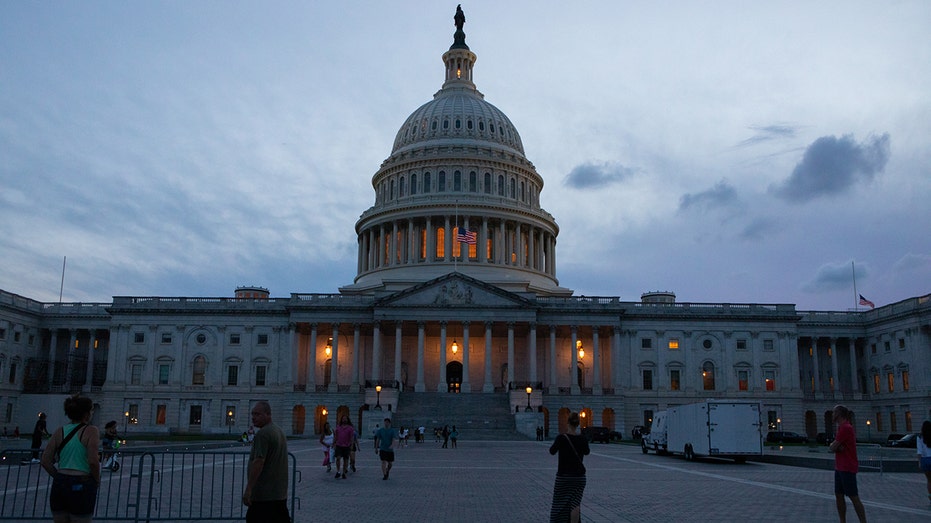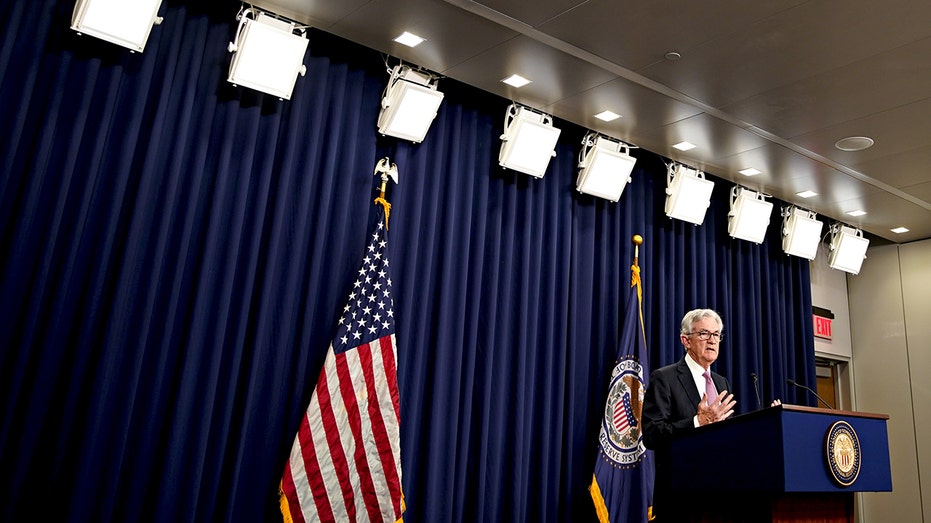Rep. French Hill, R-Ark., reacts to national debt surpassing $30 trillion.
The Federal Reserve is leading a ruthless campaign to crush persistently high inflation with the most aggressive interest rate hikes in decades.
While most of the recent attention on the U.S. central bank has been focused on whether policymakers will succeed in reducing prices without dragging the economy into a recession, there is another major consequence of higher interest rates: Potential damage to the U.S. government’s finances.
That is because as interest rates rise, so too will the federal government’s borrowing costs on its $30.89 trillion in debt.
Interest payments on the national debt are already projected to be the fastest-growing part of the federal budget in fiscal year 2022, according to the Congressional Budget Office. Payments are expected to triple from nearly $400 billion in fiscal year 2022 to a stunning $1.2 trillion in 2032 – a total of $8.1 trillion over the next decade.
INFLATION ROSE FASTER THAN EXPECTED IN AUGUST, KEEPING PRICES PAINFULLY HIGH
As a share of the economy, total interest on the national debt will hit a record 3.3% of GDP, the broadest measure of goods and services produced in the country, by 2032, the CBO estimated.
In reality, the payments could be even steeper; current interest rates are already higher than those included in the CBO estimate from May, according to the Committee for a Responsible Federal Budget, a nonpartisan group that advocates for reducing the federal debt.

The U.S. Capitol building is seen on the evening of Aug. 6, 2022, in Washington, D.C. The Senate plans to work through the night to vote on the Inflation Reduction Act, expected to conclude on Aug. 7. (Photo by Anna Rose Layden/Getty Images / Getty Images)
Fed policymakers have already approved four consecutive rate hikes this year – including two mega-sized 75-basis-point increases in June and July – and have signaled they are nowhere close to stopping as they try to crush runaway inflation. The central bank is widely expected to approve another three-quarter percentage point hike at its meeting next week, or even vote to lift rates by a historic full-percentage point.
The current benchmark federal funds range of 2.25% to 2.50% is around the “neutral” level, meaning that it neither supports nor restricts economic activity. However, Fed Chairman Jerome Powell has suggested that a restrictive stance will almost certainly be necessary as the central bank tries to pump the brakes on the economy.
AMERICANS’ INFLATION EXPECTATIONS DROPPED AGAIN IN AUGUST, NEW YORK FED SAYS
“The Fed has, and accepts, responsibility for price stability,” Powell said last week at the Cato Institute’s 40th Annual Monetary Conference. “We need to act right now – forthrightly, strongly.”

Jerome Powell, chairman of the U.S. Federal Reserve, speaks during a news conference following a Federal Open Market Committee meeting in Washington, D.C., on May 4, 2022. (Photographer: Al Drago/Bloomberg via Getty Images / Getty Images)
For years, the U.S. has been able to borrow cheaply, as interest rates have remained historically low. However, as the federal funds rate increases, so will short-term rates on Treasury securities, making federal borrowing more expensive.
“The growth in interest costs presents a significant challenge in the long-term as well,” the Peter Peterson Foundation said.
The CBO’s projections show that interest payments could eventually total close to $66 trillion over the next 30 years, eventually taking up almost 40% of all federal revenue by 2052. Interest costs would also become the largest “program,” over the next few decades, surpassing defense spending in 2029, Medicare in 2046 and Social Security in 2049.
BILLIONAIRE DAVID RUBENSTEIN WARNS INFLATION WILL BE ‘DIFFICULT’ FOR THE FED TO REDUCE
“As interest rates rise and the nation’s debt grows, it will become even more expensive to borrow in the future. Congresses and presidents of both parties, over many years, have avoided making hard choices about our budget and failed to put it on a sustainable path. It is vital for lawmakers to take action on the growing debt to ensure a stable economic future,” the Peter Peterson Foundation said.

President Biden signs into law H.R. 5376, the Inflation Reduction Act of 2022 (climate change and health care bill) in the State Dining Room of the White House Aug. 16, 2022. (Photo by Demetrius Freeman/The Washington Post via Getty Images / Getty Images)
The national debt is set to hit $31 trillion as soon as this month amid a slew of new spending by President Biden and Democratic lawmakers. Biden signed into law a health care and climate change spending bill – dubbed the Inflation Reduction Act – in early August that would spend an estimated $739 billion over the next decade. Most of that revenue stems from new revenue generated by higher taxes; about half is slated to go toward paying down the debt.
CLICK HERE TO READ MORE ON FOX BUSINESS
However, that has been offset by Biden’s decision last month to cancel $10,000 in student loan debt for millions of low-income Americans and $20,000 in debt for Pell Grant recipients. Estimates have suggested the policy could cost as much as $1 trillion.


